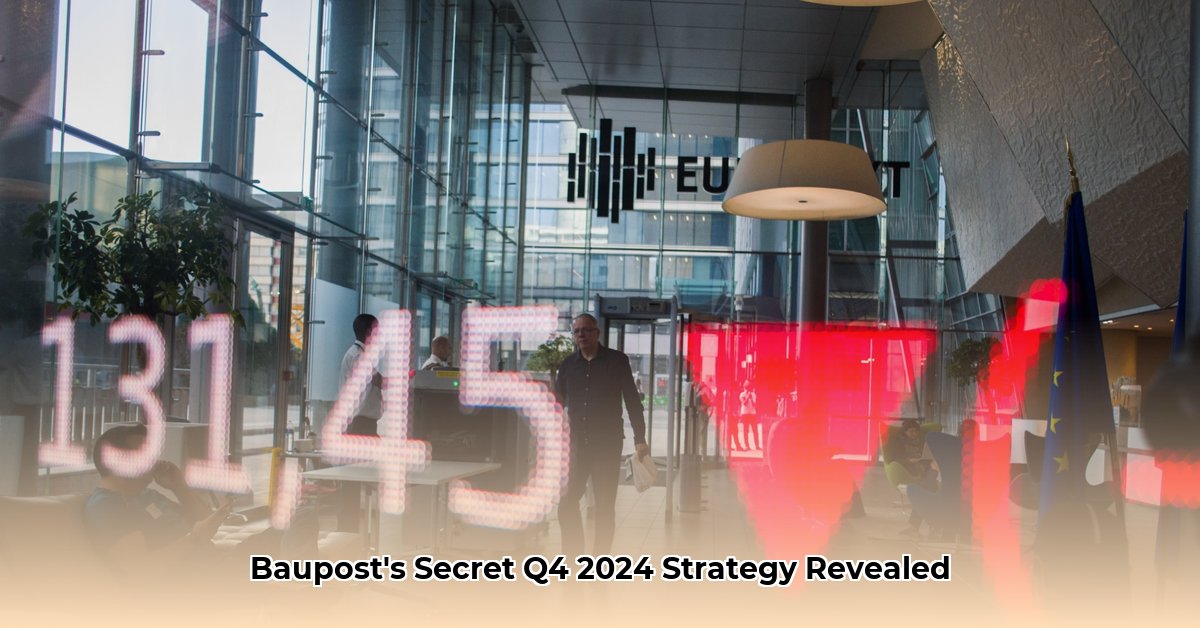
Baupost's Q4 2024 13F Filing: A Deep Dive into a Cautious Approach
Baupost Group, a renowned hedge fund known for its value-oriented investment strategy, recently filed its 13F report for Q4 2024. This filing reveals a surprisingly conservative approach, prioritizing stability and long-term value over short-term market fluctuations. This analysis delves into the key takeaways from the report, examining Baupost's top holdings, portfolio turnover, and the potential implications for investors. For more on large-cap equity funds, see this helpful resource.
A Measured Approach: Conservative Portfolio Adjustments
The Q4 2024 13F filing paints a picture of measured adjustments rather than dramatic shifts in Baupost's portfolio. The firm's relatively small additions and minimal changes to existing holdings suggest a cautious approach in the face of perceived market uncertainties. This contrasts with more aggressive strategies witnessed in previous quarters. This approach suggests a focus on preserving capital and maintaining long-term value, prioritizing stability over short-term gains. How does this conservative strategy translate into actionable intelligence for other investors? Is it simply a matter of reducing risk, or is there a more nuanced strategy at play?
A significant portion of Baupost's portfolio (31.84%) is concentrated in two companies: Liberty Global (LBTYK) and Willis Towers Watson (WTW). This concentration, consistent over several years, highlights a clear preference for familiar, reliable investments with demonstrably strong fundamentals. Does this strategy suggest a belief in long-term resilience in these specific sectors or a preference for predictability?
Portfolio Dynamics: Slight Growth, Moderate Risk
The portfolio's market value experienced a modest 11.78% quarterly increase but saw a slight overall decline from $3.52 billion to $3.43 billion. This dip, however, requires further context. Was this decline a strategic reallocation or a reflection of broader market trends? Comparing Baupost's performance against relevant market indices offers crucial insights. By conducting a thorough comparative analysis, we can better assess whether the portfolio's performance is outpacing, lagging, or mirroring the wider market. This comparison is crucial in determining if Baupost's strategy is outperforming expectations in the current market climate.
Low Portfolio Turnover: A Long-Term Vision
Baupost's notably low portfolio turnover, estimated between 10.16% and 28% depending on the calculation method, further emphasizes its long-term investment horizon. An average holding period of 8.5 quarters across all positions reinforces this commitment. This contrasts sharply with more actively managed funds, indicating a preference for long-term value creation over short-term trading gains. Does this conservative approach limit potential upside, or does it offer a greater margin of safety against market volatility?
Sectoral Concentration: Balancing Rewards and Risks
Baupost's portfolio concentration in a few key sectors, primarily financial services and communications, presents both opportunities and risks. While this focused strategy can lead to significant gains in favorable market conditions, it also increases exposure to sector-specific downturns. A significant negative event impacting either sector could substantially impact Baupost's overall performance. We must weigh the potential benefits of this focused investment strategy against the heightened risk associated with concentrated sector exposure. A comprehensive risk assessment requires more detailed information beyond what’s available in the 13F itself.
Understanding the Limitations: What the 13F Doesn't Tell Us
It's crucial to acknowledge that the 13F filing provides only a partial view of Baupost's investment strategy. It showcases their equity holdings but doesn't reveal their short positions, derivatives, or other asset classes. A complete understanding would require accessing additional information, including official statements, news coverage, and potentially conducting extensive further research into Baupost's investment strategies and risk-management approaches.
Key Implications for Different Stakeholders
The implications of Baupost's Q4 2024 13F filing differ significantly across various stakeholder groups. For Baupost, the filing likely underscores the importance of continued market monitoring and adaptive strategies. For investors, the filing highlights the importance of careful risk assessment and diversification. For financial analysts, it provides ample opportunities for further research into Baupost's methodologies and the underlying strengths and weaknesses of their investment approach.
Disclaimer: This analysis is based on publicly available information and should not be considered investment advice. The data presented is limited and does not fully capture the complexity of Baupost's investment strategies. Thorough independent research is recommended before making any investment decisions.